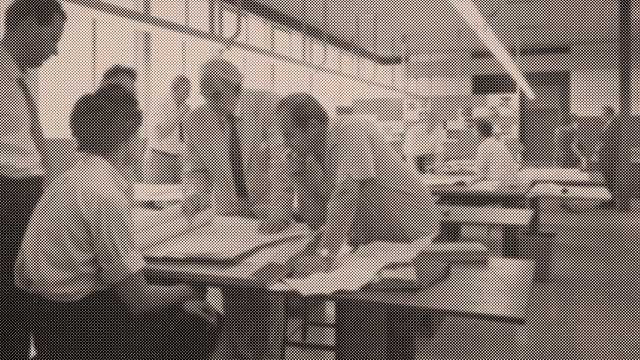«Thinking Modern, Building Open»
Explorations on the path towards modern architecture | Part Two
by Lennart Franz
The Bauhaus’ revolutionary practice as a beacon of modernism has triggered nothing less, than a transculturation in architecture. A process, rooted in the schools critical approach towards traditionalist aesthetic and its virtually manic quest for an original identity of its new design practices. Design and architecture were to be made accessible for everybody regardless of gender, social, cultural or political backgrounds. Founded on the ethos of programmatic openness, the Bauhaus lifted the spell of conservative ideologies deadening architecture and design. Thus, it prepared the ground for the burgeoning of modernism. That the institution was not chosen to refine the balance between its inner structure, its academical and political poles, must be charged on its premature shutdown on behalf of national socialism. Its destructive force also chased society back into a sphere of conservative architectural culture. Hence terminating the emergence of modernisms early intellectual and aesthetical habitat, which it regarded to be similarly degenerated as the notions of modern art, music and literature.
The genuine revolutionary, liberal ideals constituting early modernism, floating spaces and newly found aestheticisms, were intended to be buried again 1933 accompanied by the Bauhaus. Though it was not possible to destroy modernism, as an alternative to national socialisms masterful world view, and its humanistic ideals - despite perfidious campaigns. The forced scattering of Bauhausians all over the world contributed to a large-scale sprouting of various modernist movements. The US became their new mainland. The “New Bauhaus” was founded in Chicago by Ludwig Mies Van der Rohe. Institutions like the Black Mountain College in North Carolina attracted many former Bauhaus protagonists. While the majority of those former Bauhausians from Weimar, Dessau and Berlin expanded their work in the spirit of the Bauhaus, modernism did also thrive outside the schools sphere.
Modernism aside the Bauhaus
Trailblazer of this parallel movement, flourishing alongside the Bauhaus, was the Austrian architect Richard Joseph Neutra. With their striking cubic and glazed appearance, his works were a remarkable contribution to the unmistakable look of northern American modernism. An expression which was to influence the formal evolution of architecture and design aesthetics to this day. Withal being one of the faces of northern American modernism, Neutra was born in Vienna in 1892. In his first decades of life, he acquired an exceeding architectural knowledge, parallel to his engineering degree. In 1912 he joined the classes of radical avant-gardist Adolf Loos, at that time already a well-known and eloquent advocate of a modernized architectural practice. Within Loos’ private institution, Neutra came into contact with the works of American architect Frank Lloyd Wright for the first time. He quickly grew a deeply keen enthusiast of Wrights creations. To which extend, becomes obvious considering Richard Neutras firstborn son bears the name Frank L.
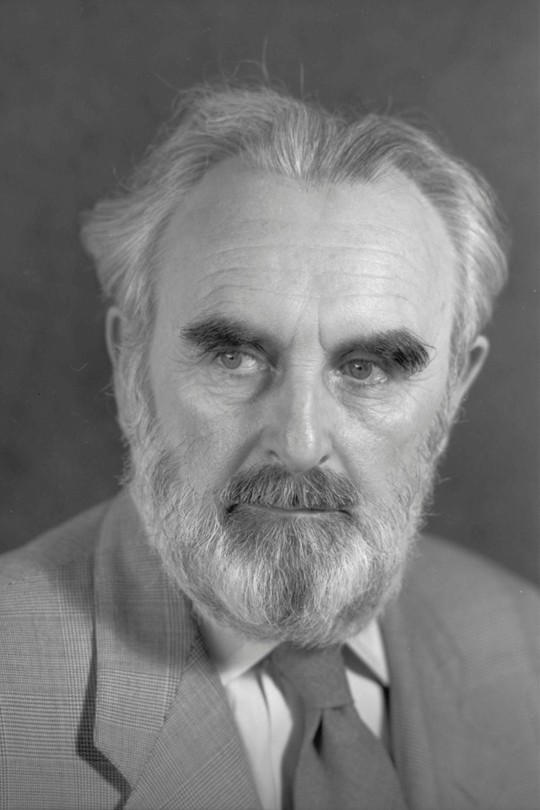 Architect Richard Joseph Neutra, portrayed in 1950 by the American photographer Julius Shulmann.
Architect Richard Joseph Neutra, portrayed in 1950 by the American photographer Julius Shulmann.(Photo: Julius Shulmann/J. Paul Getty Trust/Getty Research Institute Los Angeles)
Alike most of his coevals, Neutra wasn’t granted an unhindered completion of his studies. In the maelstrom of a conflict ridden global policy, Richard Neutra was wrenched into the atrocious chasms of World War One. Maimed by malaria and tuberculosis, the lieutenant-colonel of artillery returned from the battlefields in 1917. To unburden himself of his drastic mental and physical trauma he went to take the waters in Switzerland. Turning to creativity and productivity, he stood against his war trauma: In the post war years he finally completes his architecture studies cresting them with an additional training as a landscape designer, mentored by Zurich luminary Gustav Ammann. Besides his studies, his Zurich years also brought forth his meeting with his future wife, Dione Niedermann, a singer and cellist. They married in 1922 during Richard Neutras tenure at the Berlin studio of expressionist architect Erich Mendelsohn.
A year later both decide to emigrate to northern America. The blissful ease with which architecture seems to be carried out in the US’ irresistibly attracts Neutra. For him it was evident, proven by the libertine nature of Wrights buildings, posing as the essence of designerly autonomy, in both architectural thought and practice. It must have been his impression, that this was the only place fit for him to follow his vision of drafting buildings non-constricted by conservative and traditionalist norms. The couple moved to Chicago. During his employment at the local practice Holabird & Roche, he meets Frank Lloyd Wright personally for the first time. On the occasion of Louis Henri Sullivans funeral, proponent of the “form follows function” idea, Neutra got into conversation with Wright. In the course of his career, Neutra will devise his very own notion concerning the interrelation of form and function.
The influence of the “Chicago School” in whose sphere Neutra dwelled in the mid 1920’s, equivalent to the European modernism, would have done its part. In correspondence to the European movement, the Chicago School as well avouched for a rationalised concept of architecture and design, backed by rapid innovations within the construction industry. Wright invites Neutra and his wife to his studio in Spring Green, Wisconsin. Wright and Neutra found each others company prolific in a way, that the Austrian architect soon joined Wrights team for a year in his studio “Talesien”. The various inspiring and impressive encounters with a newly forming American leitmotiv at Holabird & Roche as well as in Wrights practice, kindled Neutras urge to contribute to this genesis. In 1925 he, alongside his compatriot Rudolf Schindler establishes his own studio in Los Angeles.
The all-dominant question for him, motive of his quest for unexploited ways of thinking, designing and creating architecture, are summed up in the title of his first publication: “Wie baut Amerika?” A question he will himself be answering through the realisation of numerous visionary and iconic buildings. After his joint practice with Schindler in L. A., Neutra founded another studio commited mainly to public projects. Settlements, churches, hospitals and academes originated from his “Neutra Firm”. Neutra was manically productive. The realisation of his concepts, the implementation of his ideals of architecture and design turned out to be not satisfying enough.
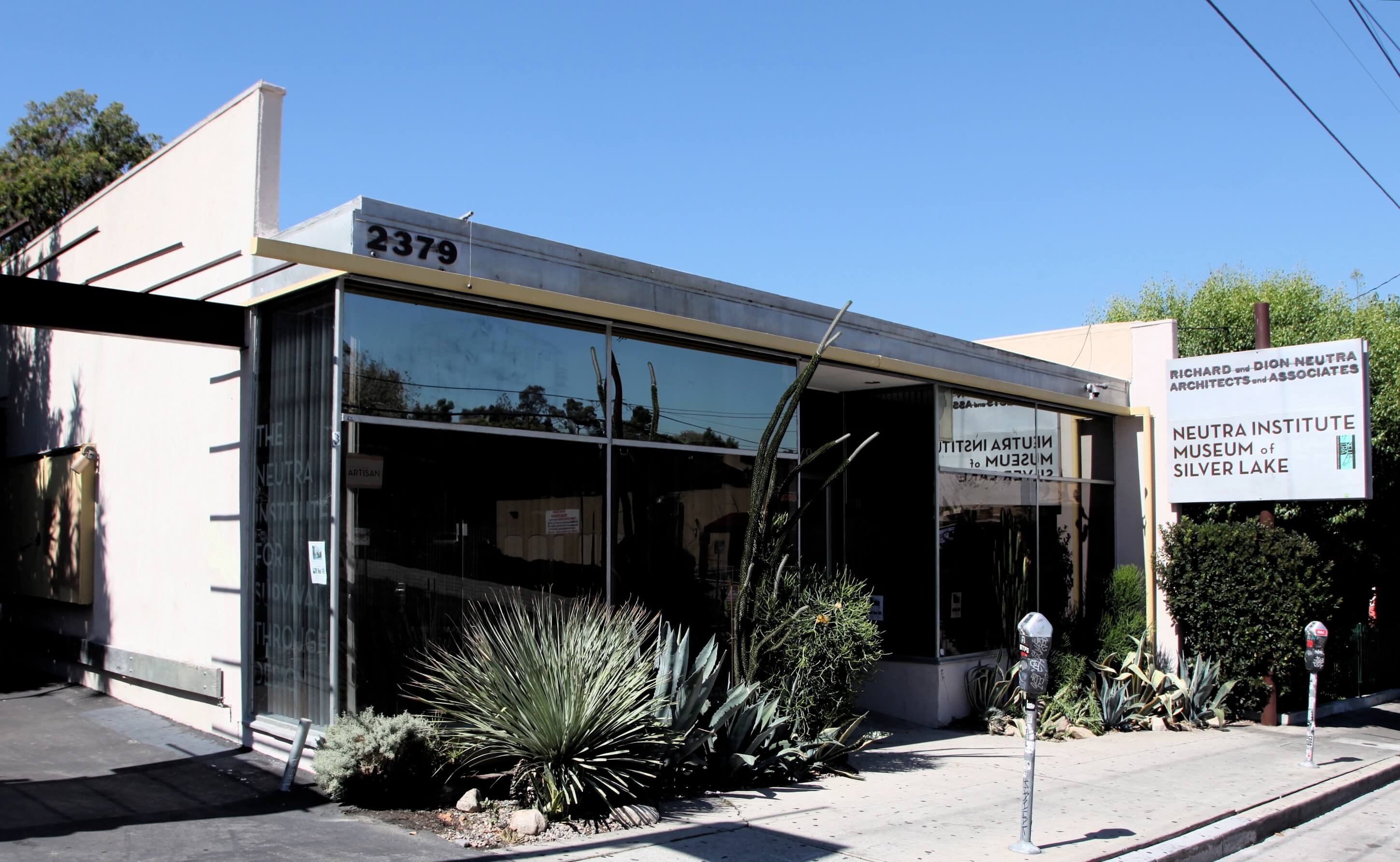 The current state of the façade of Neutras’ architectural office on Glendale Boulevard in Los Angeles. (Photo: Bruce Boehner)
The current state of the façade of Neutras’ architectural office on Glendale Boulevard in Los Angeles. (Photo: Bruce Boehner)
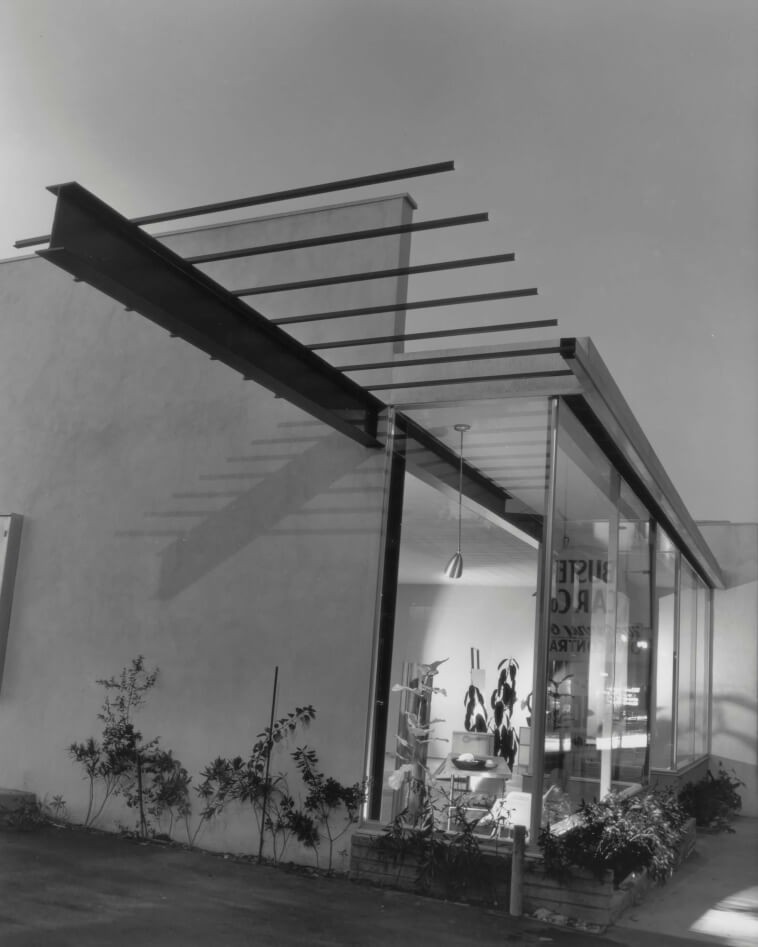 The front of Neutra's architectural studio in Los Angeles, photographed by Julius Shulmann 1950.
The front of Neutra's architectural studio in Los Angeles, photographed by Julius Shulmann 1950.(Photo: Julius Shulmann/J. Paul Getty Trust/Getty Research Institute Los Angeles)
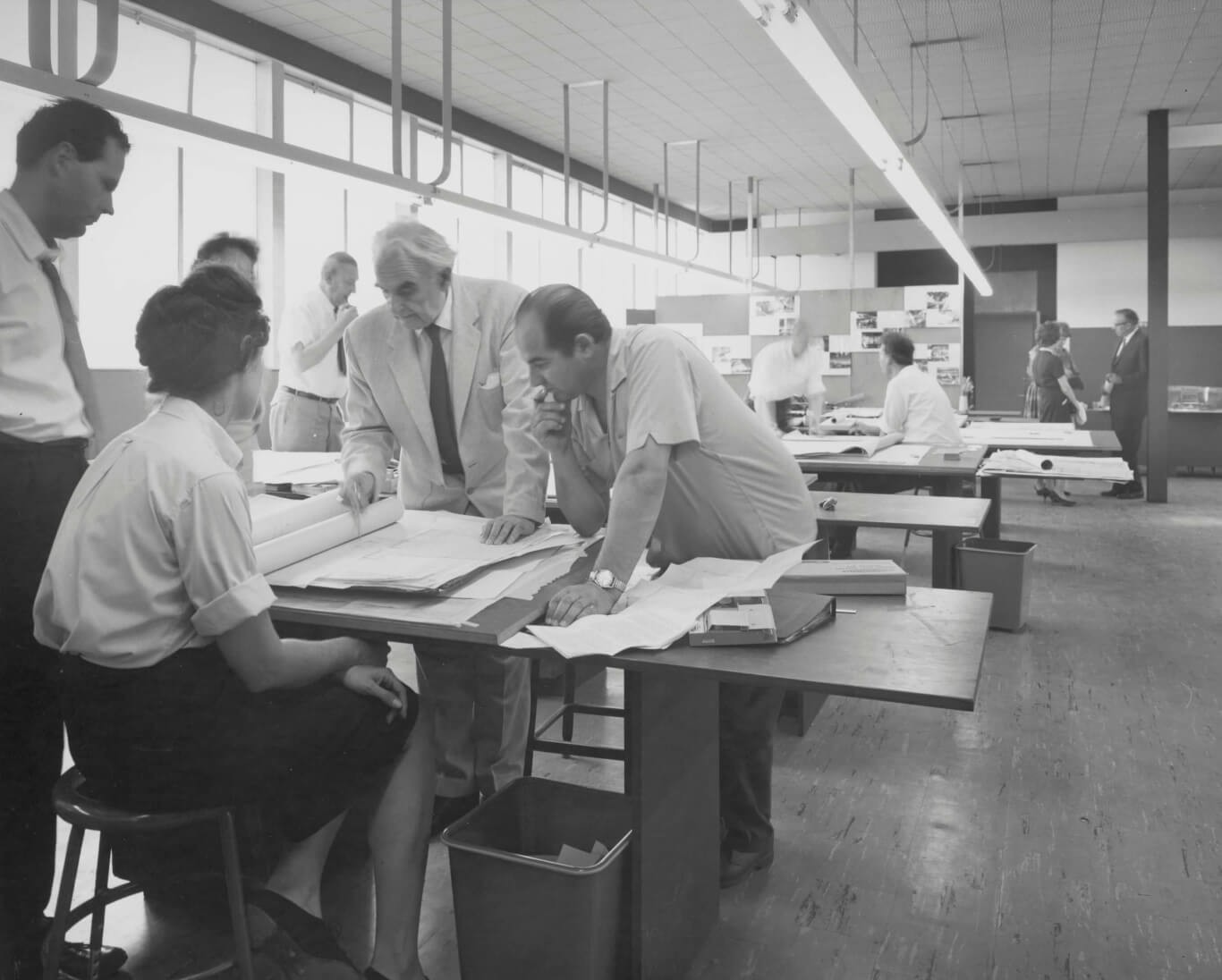 Neutra (second from right) also remained true to his open and light concepts in the spatial concept of his company's office space.
Neutra (second from right) also remained true to his open and light concepts in the spatial concept of his company's office space.Photo: Julius Shulmann/J. Paul Getty Trust/Getty Research Institute Los Angeles)
A tireless modernist
In 1928 Neutra brings the Academy for Modern Art in L. A. to life. After being granted American citizenship in 1929 he participates in the International Congress for Modern Architecture as a United States delegate. The following year Neutra undertakes various study journeys, visiting every continent and also the Bauhaus in Dessau. Conforming with his fellow Bauhausian modernists, he views architecture to be more than a procedure to produce living, working and functional spaces. His designs are governed by consequent geometrical clarity, open spaces and floating transitions. Both applied to his buildings interiors, its intersection with any exterior, the grown and the build, the natural and the artificial as well. This way, Richard Neutras work accomplished to offer a type of spatial generosity, unattainable for too barred spaces, however vast they might be.
These ultimate principles fused in his design of the “Lovell Health House” of 1929. His graphic, linear design consists of a cubic arrangement with alternating walls and bounteous panes. Those panes would soon become his signature brushstroke. But until then the panes were put together by stringing together a number of smaller windows. The building however, must have been perceived as most futuristic, a milestone in the development of architectural style. Also in fabrication Neutra stroke new paths: In the manner of his European colleagues, he employed steel frame supported constructions on a grand scale. The synergetic relationship between industry and construction work was a significant parameter in the forthcoming modernisation of architecture – especially in the worlds leading industrial nation.
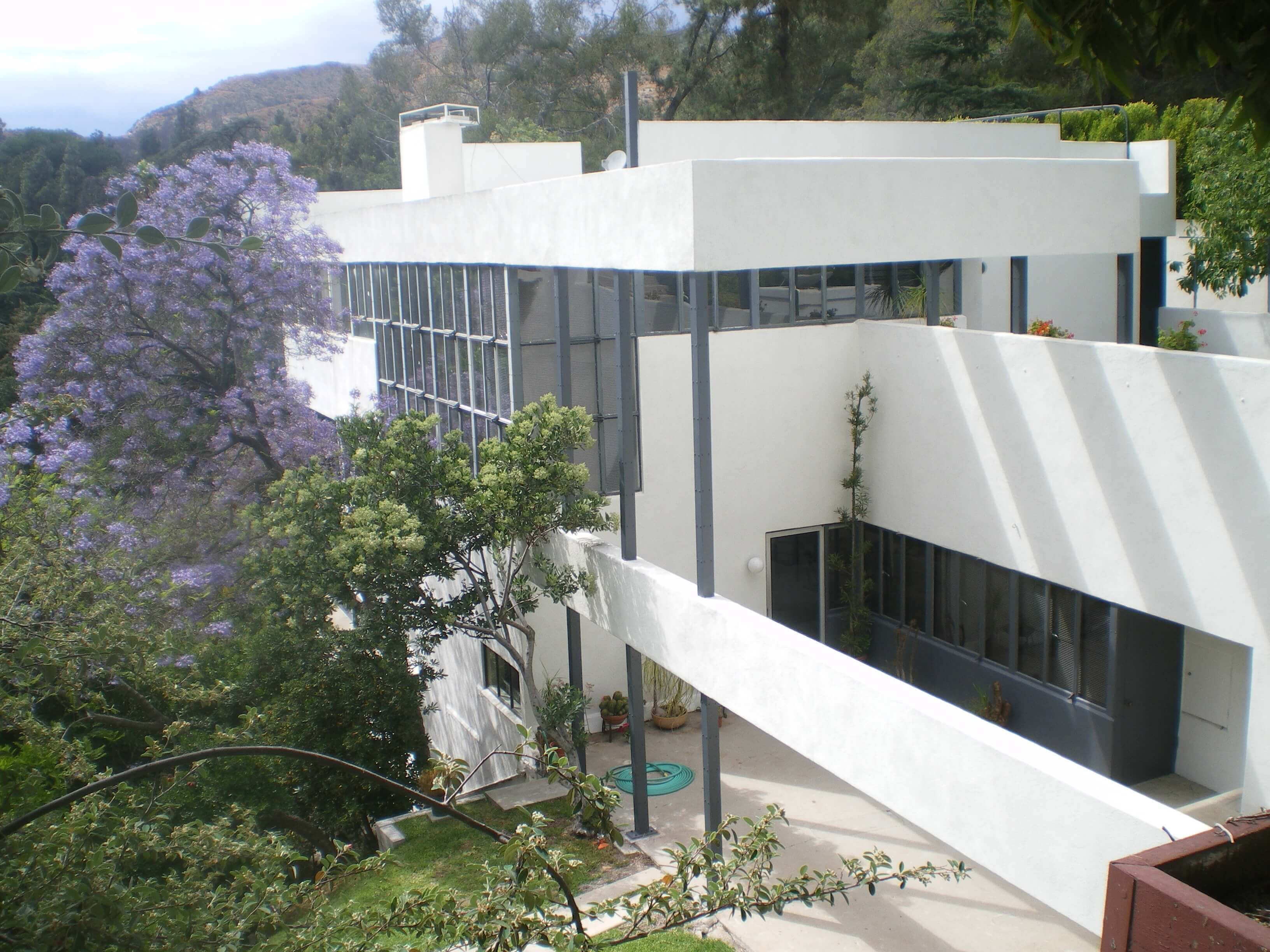 The Lovell Health House in northern Los Angeles was the breakthrough for Neutra. An icon that still can be visited today.
The Lovell Health House in northern Los Angeles was the breakthrough for Neutra. An icon that still can be visited today.(Photo: City of Los Angeles)
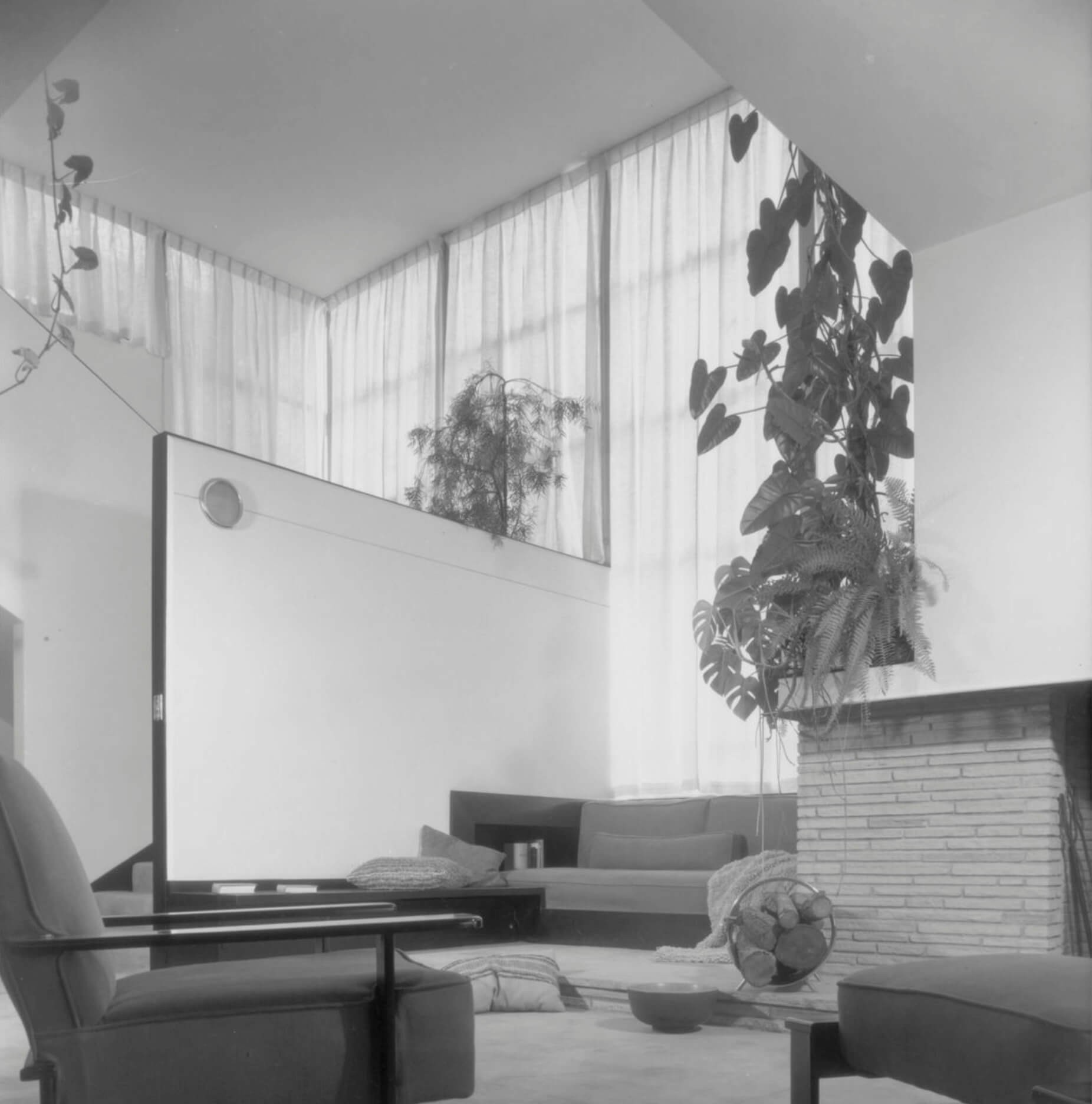 Neutra implemented unprecedented openness and spatial generosity in its buildings. The attitude towards life in his designs triggered a real revolution in style. (Photo: Julius Shulmann/J. Paul Getty Trust/Getty Research Institute Los Angeles)
Neutra implemented unprecedented openness and spatial generosity in its buildings. The attitude towards life in his designs triggered a real revolution in style. (Photo: Julius Shulmann/J. Paul Getty Trust/Getty Research Institute Los Angeles)
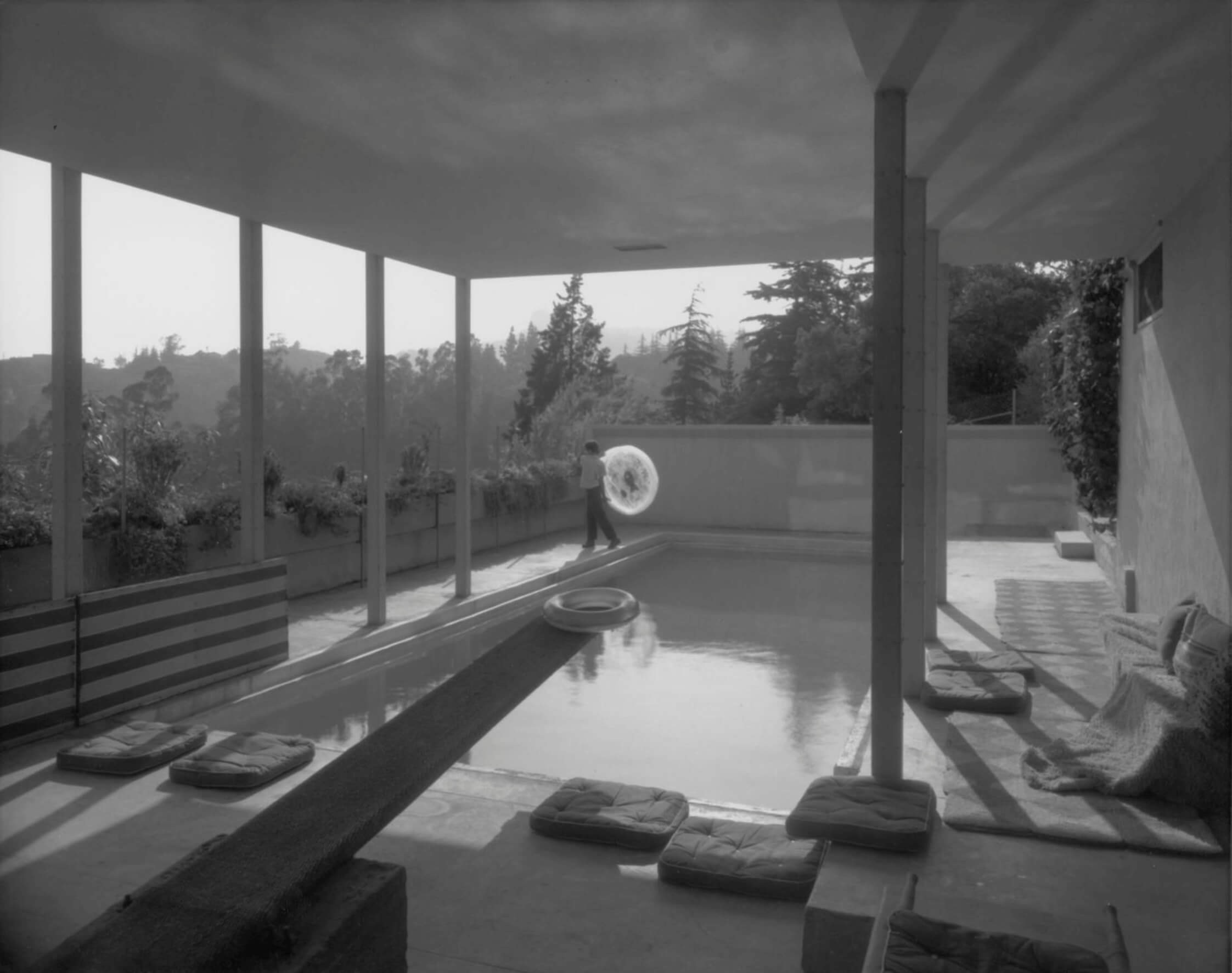 Despite the size of the house, Neutra was careful not to neglect its much invoked access to nature. Thus, Lovell House presented a generous outlook over the greenery of Griffith Park. (Photo: Julius Shulmann/J. Paul Getty Trust/Getty Research Institute Los Angeles)
Despite the size of the house, Neutra was careful not to neglect its much invoked access to nature. Thus, Lovell House presented a generous outlook over the greenery of Griffith Park. (Photo: Julius Shulmann/J. Paul Getty Trust/Getty Research Institute Los Angeles)
Richard Neutras name instantly became a term for modernist architecture in and beyond America, thanks to his accurate and clear, yet naturally easy style. His characteristic, geometrical purism and the areal wall and pane arrangements, alongside his contemporaries designs, soon fashioning the label “International Style”. Its proponents speedily advancing to become architectural pop-icons. Inside the US Neutras reduced designs quickly gained the status of a national style, a built representation of Americas lifestyle. The vernacular referring to his unique architectural expressions as the “californian” or “L.A. Style”.
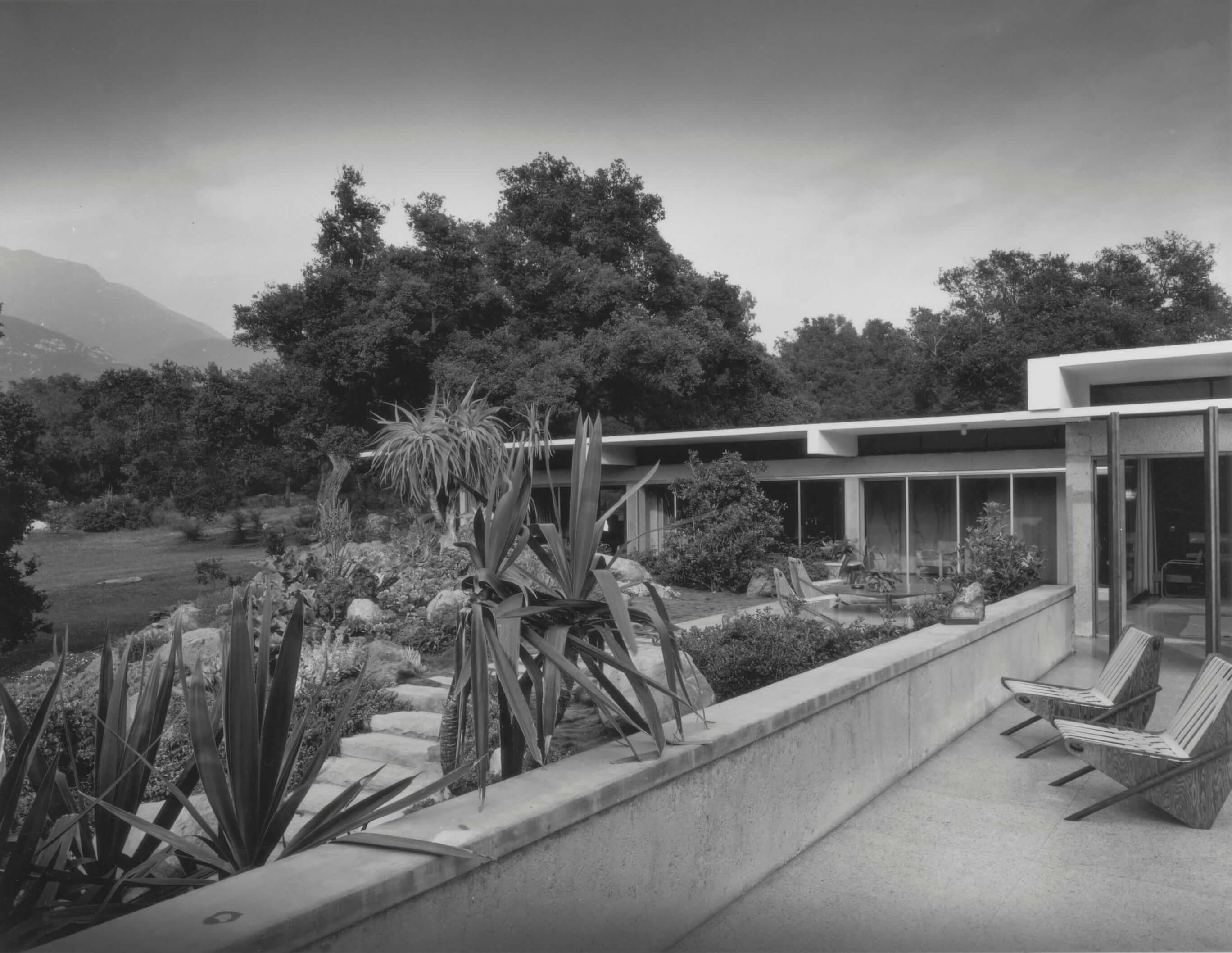 Also in Neutra's design of the Tremaine House his conviction and affinity for nature becomes clear.
Also in Neutra's design of the Tremaine House his conviction and affinity for nature becomes clear.(Photo: Julius Shulmann/J. Paul Getty Trust/Getty Research Institute Los Angeles)
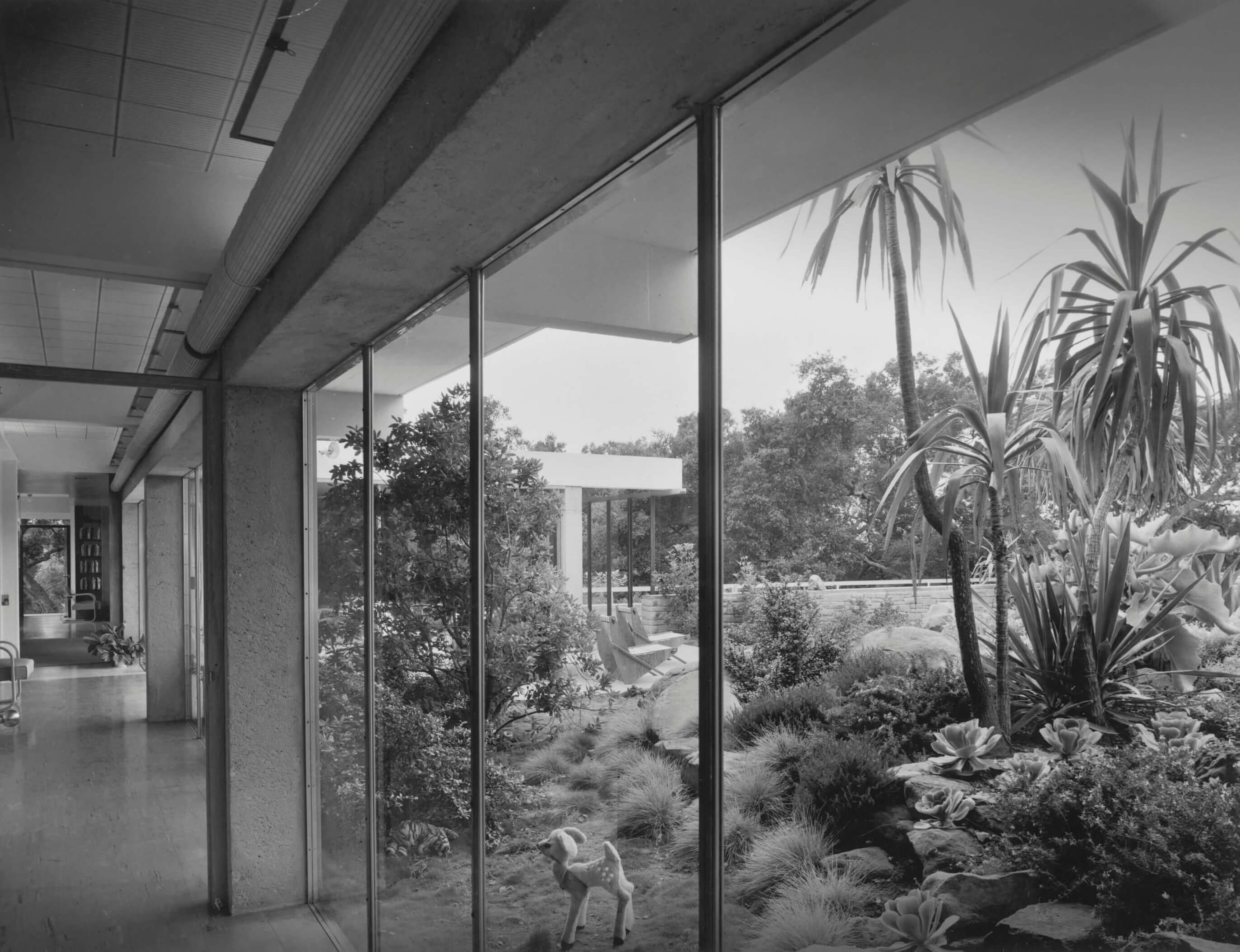 A rich flora existed or was arranged around his buildings, which he integrates into the building concept through Neutras typical, generous implementation of glass fronts. (Photo: Julius Shulmann/J. Paul Getty Trust/Getty Research Institute Los Angeles)
A rich flora existed or was arranged around his buildings, which he integrates into the building concept through Neutras typical, generous implementation of glass fronts. (Photo: Julius Shulmann/J. Paul Getty Trust/Getty Research Institute Los Angeles)
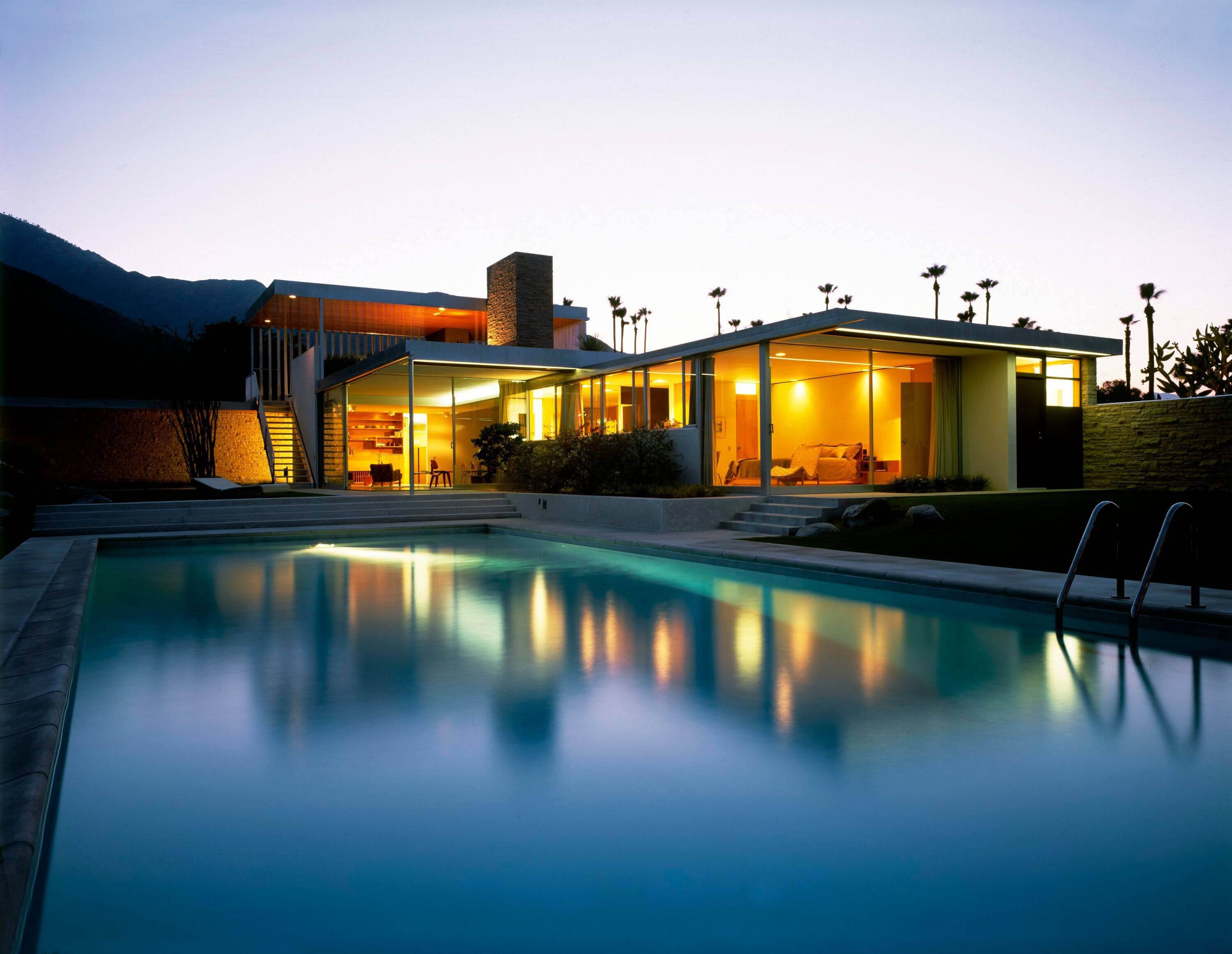 Richard Neutra's Kaufmann House is probably one of the most famous examples of modernist openness. Here, Neutra has closely interwoven the spatial and living experience with the surrounding context of the house.
Richard Neutra's Kaufmann House is probably one of the most famous examples of modernist openness. Here, Neutra has closely interwoven the spatial and living experience with the surrounding context of the house.(Photo: Julius Shulmann/J. Paul Getty Trust/Getty Research Institute Los Angeles)
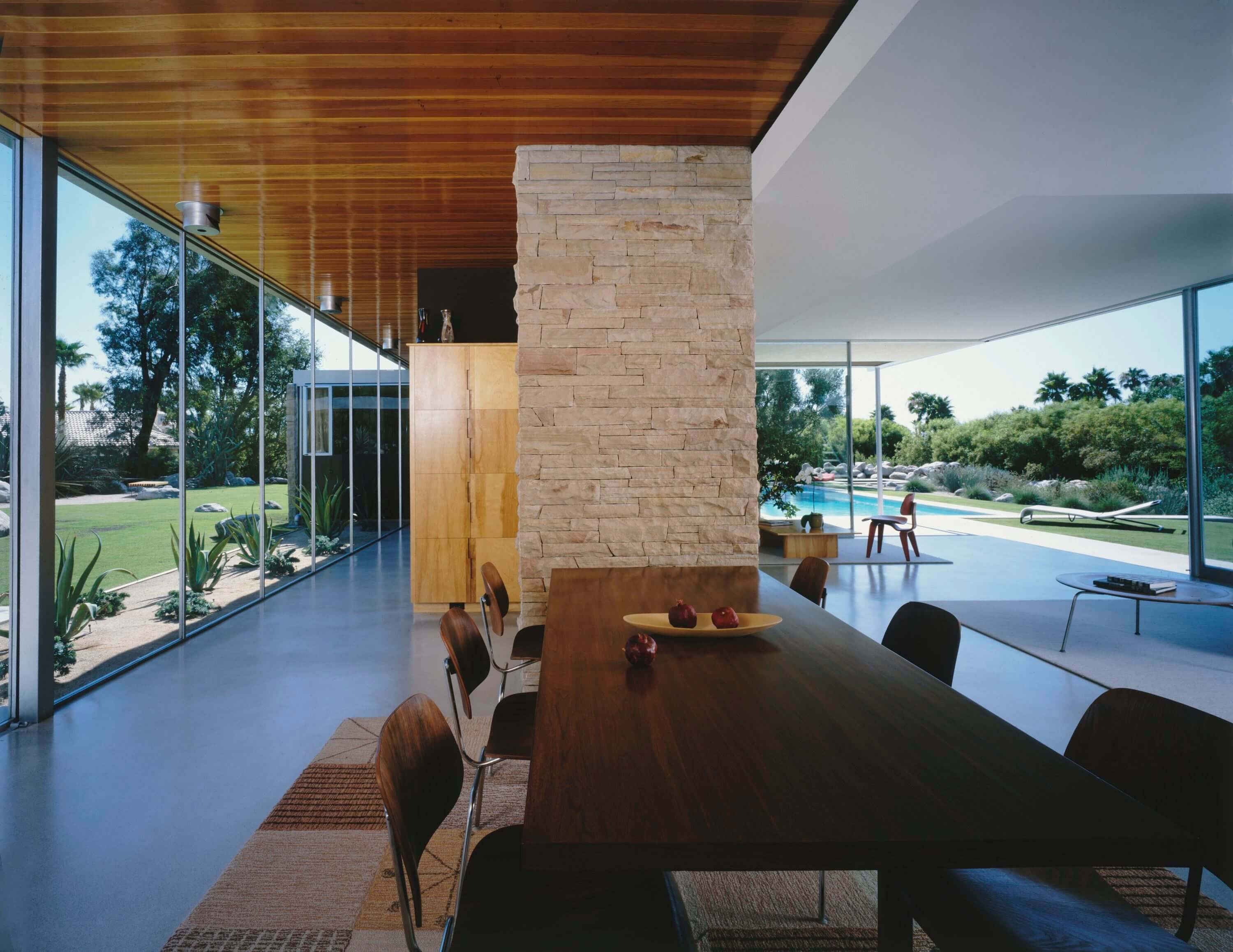 The interior of his building in Palm Springs also shows how his designs began to shape a new concept of luxury to which aesthetic asceticism did not object. (Photo: Julius Shulmann/J. Paul Getty Trust/Getty Research Institute Los Angeles)
The interior of his building in Palm Springs also shows how his designs began to shape a new concept of luxury to which aesthetic asceticism did not object. (Photo: Julius Shulmann/J. Paul Getty Trust/Getty Research Institute Los Angeles)
These style terms carry within them allusions to the Californian sun and the effortlessness of urban savoire vivre and surfer culture. An associative bridging we owe to the airy openness of Neutras planning: In his open-space concepts, which favoured large window panes in lieu of walls, his architecture allowed a perfectly mellifluous life beneath the eternal sun of the paradisiac west coast.
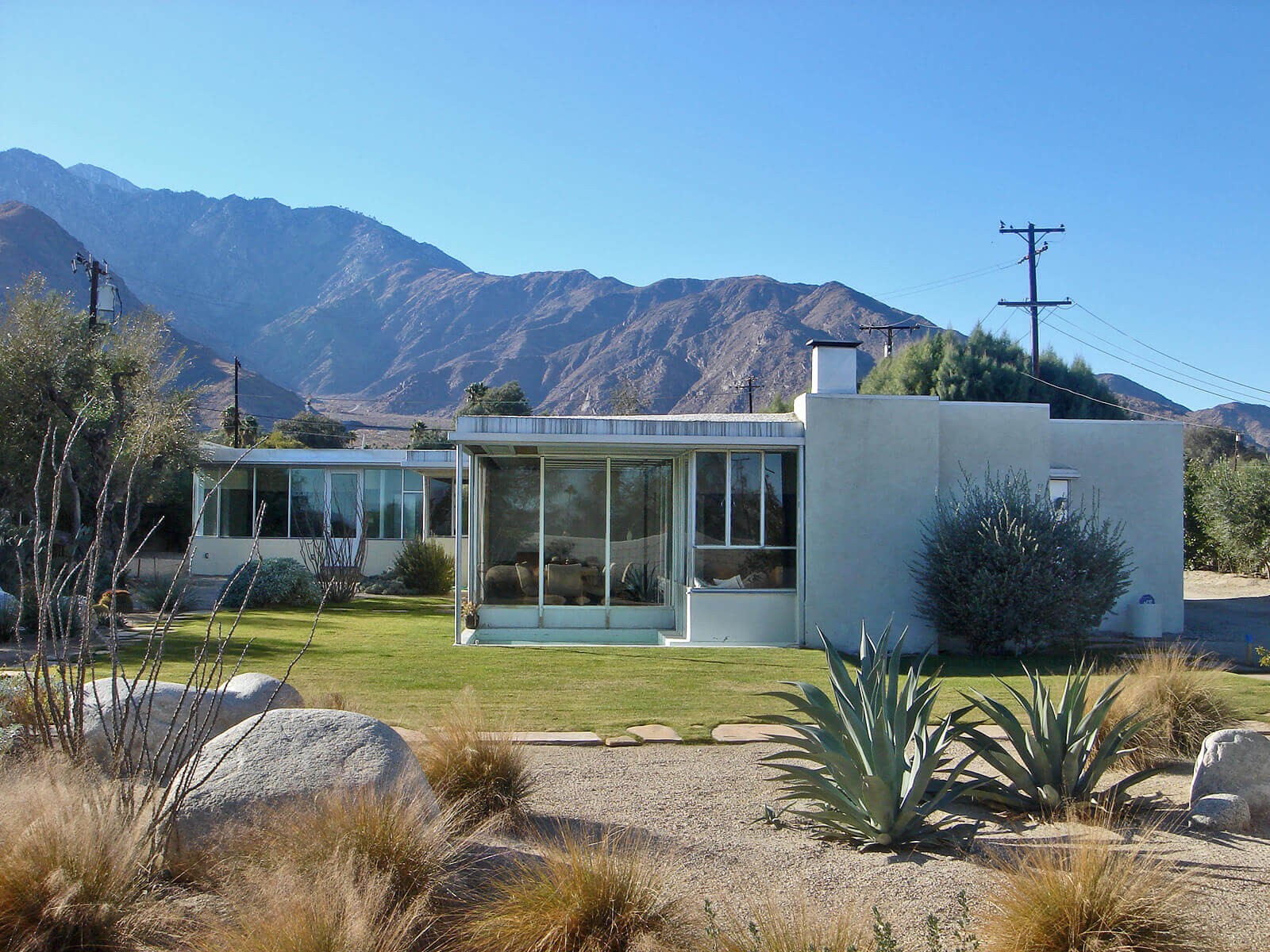 The Miller House integrates itself gently into the landscape of Palm Springs. (Photo: Ilpo’S Sojourn)
The Miller House integrates itself gently into the landscape of Palm Springs. (Photo: Ilpo’S Sojourn)
Architectural furore in the service of humanity
His success had signaling effects: From 1929 assignment followed on assignment and Neutra let his idealistic ambitions become reality. Primarily in the sunny west of the USA. Climate, Light and his clients wealth formed a convenient soil for his projects to thrive and prosper. In spite of his growing popularity, Neutra never lost sight of his objective to develop modernism over too much self-aggrandisement or falling into the role of an eccentric maestro. Nor was he frail to force his conceptual or aesthetic agenda upon his customers. Unaltered, his designs were dedicated to his patrons needs, ideas and wishes. With an almost systematic empathy, Neutra treated every construction project as unique process: To effectively gain insights into the constellation of his clients desires, they had to fill in detailed forms. With aid of this quasi bureaucratic approach, Neutra was able to sensitively adjust the details of his planning to suit his customers individual lifestyles. Instead of throwing them before fait accompli, the forms of his drafts sought only to enrich and ameliorate every individuals quality of life.
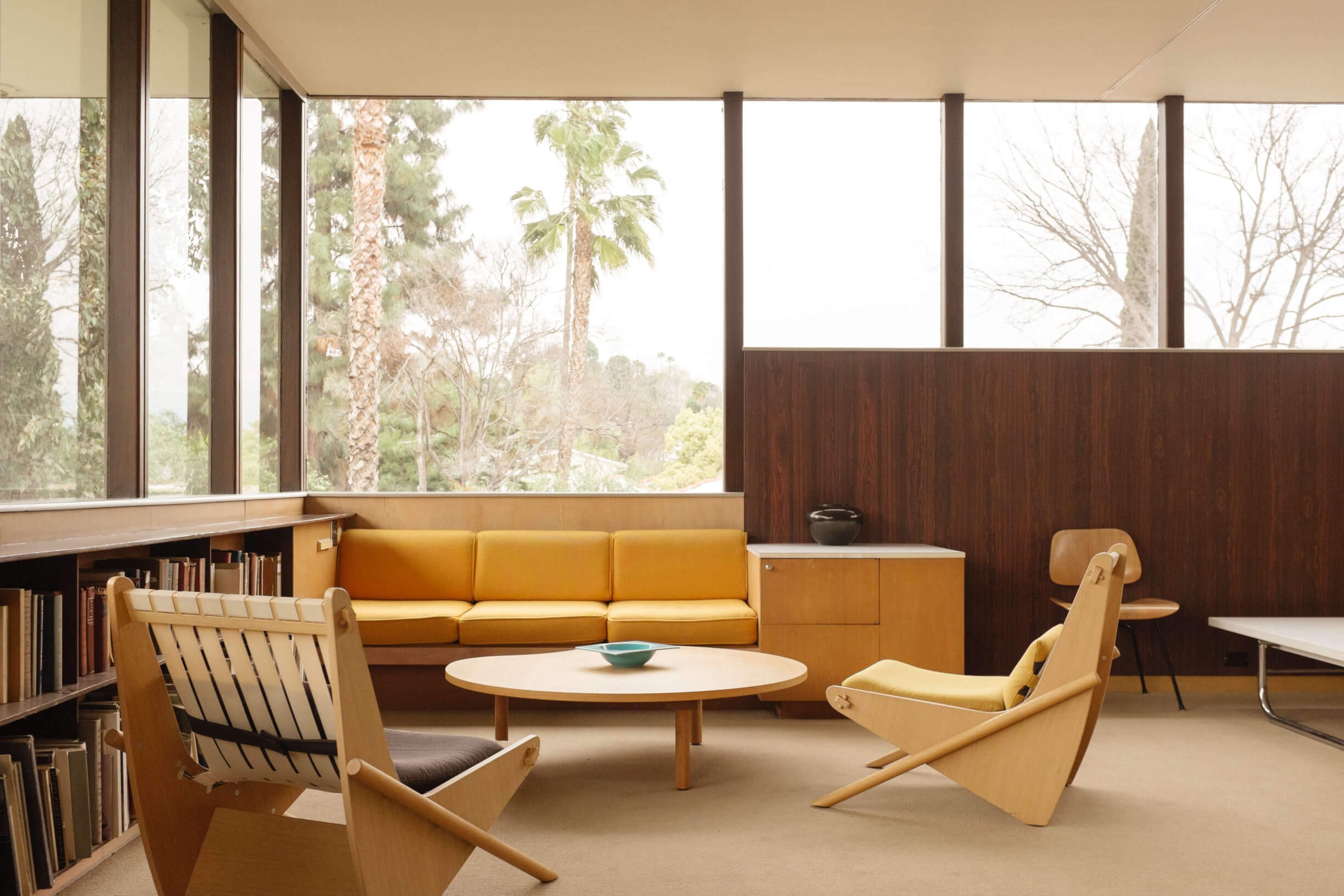 Neutra's interior designs were always finely balanced between function, openness and - at least visually - closeness to nature.
Neutra's interior designs were always finely balanced between function, openness and - at least visually - closeness to nature.(Photo: Daniel Kim)
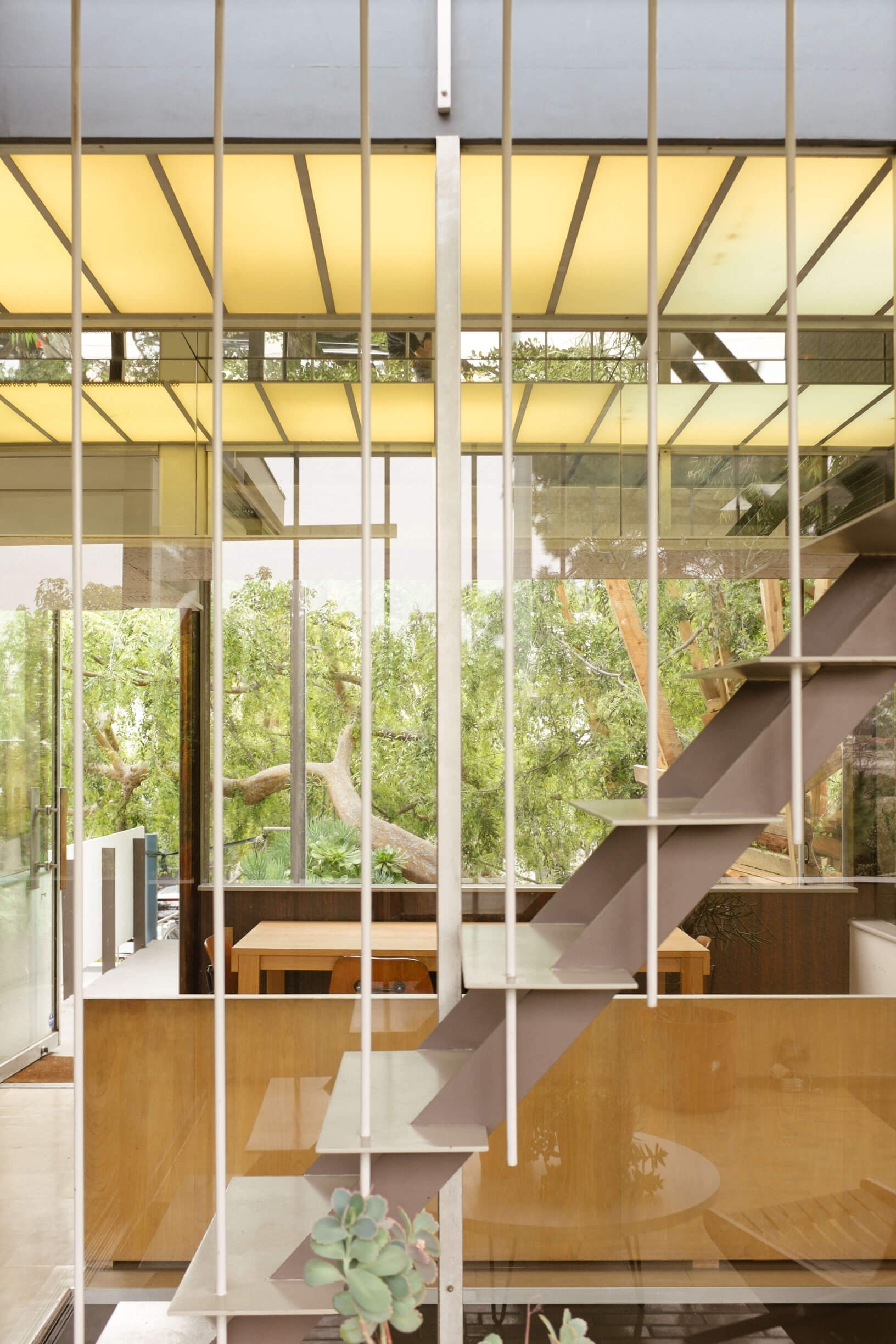 The reduction of various building elements such as stairs & co. to their essential static components created unobstructed views of the greenery in the surroundings of his buildings. Reductions that at the same time created formal aesthetic innovations that were adapted by modern design. (Photo: Daniel Kim)
The reduction of various building elements such as stairs & co. to their essential static components created unobstructed views of the greenery in the surroundings of his buildings. Reductions that at the same time created formal aesthetic innovations that were adapted by modern design. (Photo: Daniel Kim)
In this manner he broadens his professional repertoire by a factor, rather neglected by a discipline prone to ostentatious habits: Empathy. Throughout his career, gaining traction in 1929 up until the 1970’s, Richard Neutra constantly strove to tweak his architectural ethos formally and functionally. He calls this principle “bio realistic architecture”. From his point of view, humans woud only to accomplish true well-being if put into close contact with nature: “One must bring humanity into contact with nature; there it developed and thus, it is where humanity feels most at home”, Neutra expressed his philosophy.
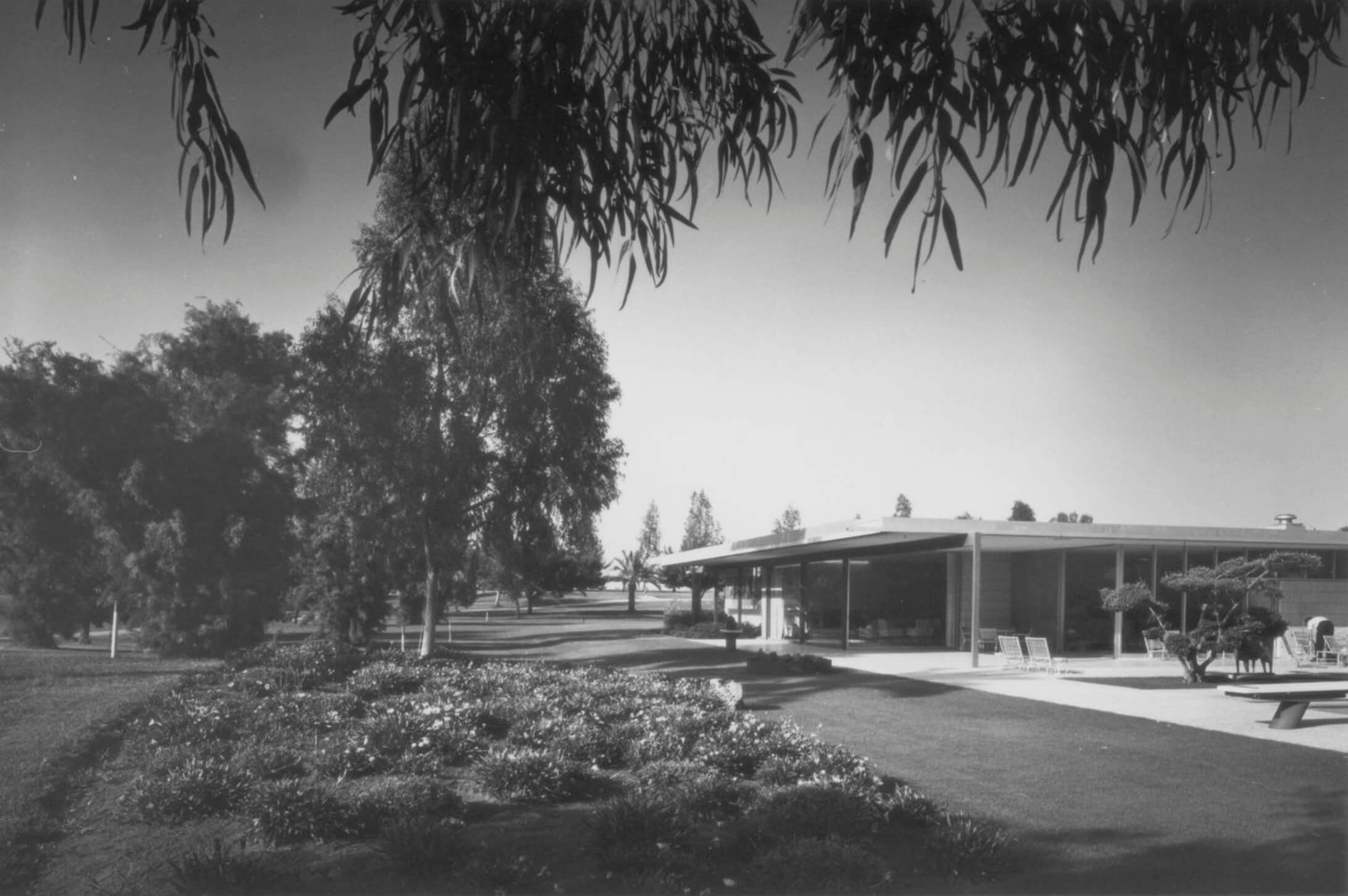 The Maslon House in Mirage, California, constitutes another modern pavilion building imbedded into a vast greenery.
The Maslon House in Mirage, California, constitutes another modern pavilion building imbedded into a vast greenery.(Photo: Julius Shulmann/J. Paul Getty Trust/Getty Research Institute Los Angeles)
To live up to his credo, he focused on two main aspects within his designs: Mainly on open-plan concepts. This way of creating spatial context should prevent thoughtless sequences of solely functionally destined rooms. A relaxed spatial structure and atmosphere was intended to grant a versatile character to his buildings: Private comfort and relaxed cocktail parties should be equally easy to be achieved. Every lifestyle and every kind of occasion should be served. After the liberation of his customers from the narrowness of conventional buildings, the next step lay in their reconnection with nature. Ambitions which spawned Neutras prominent stylistics: Numerous, wide window panes dissolving any boundaries within his spatial compositions bearing nearly diaphanous buildings. Those buildings were mere frameworks, a symbolic marking between inside and outside. Richard Neutra thus eventually demolished the conventional barrier which commonly segregates dwellers and environment and reduced this barrier to the practical minimum of a window pane.
This effective reduction should then result in a visual and atmospheric correspondence between built structure and nature. The integration of natural components was a constant factor in Neutras work. Either through indirect employment, creating panoramic views that incorporated scenical attractions into the buildings spatial disposition. Or rather directly, by actually building around the flora, rock sections or other natural formations. In both cases, the panes guaranteed a fusion of the domestic and natural reality, fashioning floating spaces from his subtle virtuosity.
The rise in life quality as exemplified through Neutras distinct approach was though not only to benefit single individuals, but was intended to transform architecture as a whole, to benefit the public. Key element for the success of this idea was the successive industrialisation of construction work. The serial prefabrication of certain parts, a general accustoming to consider prefabrication during planning processes and pure, geometric floorplans were aimed to provide more affordable housing for a substantial number of people. With his work Neutra made an essential contribution to stylistically and idealistically reform the discipline and proved that architecture is not to be defined by four walls and a roof. Thus all the attributes defining Neutras unique approach do not simply pose a symbolic renovation but a tangible, philanthropic agenda.
Via Modernity towards the Future
It is not always obvious that, for such an agenda to be inspired, considerable innovations and advances are necessary. The familiar presence of glass cladden buildings hides the fact that their façades underwent an extensive evolution. Large-scale window panes in the mid 20th century had only been fit for usage in sun-rich regions. Only continuous innovation conducted by Sky-Frame and like-minded enabled architects and designers to consider such solutions for other regions and far more demanding building contexts as well. All technical challenges therein are mostly mastered: Parameters like stability, insulation and acoustic factors are controllable. Today, details play the most crucial roles, next to designing profound functionality: Automation, connectivity, variable opening directions, glazing tones, integrated insect screens and more. The integration of these diverse functional criteria into a single construction element transform the archetype of a window into a complex instrument. An instrument which enables architects to engage new projects with elevated sensivity towards environmental and community concerns. Nevertheless the pursuit of innovation must not get out of sight. Only constant aspiration for new capacities might enable a sustainable and future proof architecture and its diverse prospects.
In the case of Richard Neutra, those prospects mainly derived from his revolutionary approach towards a more industrialised building. Whereas his most recognized examples mainly manifests in the form of his “Houses”, some of his contemporaries brought the idea of modernism into vertical spheres. The boom of the skyscraper topographies, which nowadays are of course part of our cityscapes, appears unthinkable without the increasing dimensions – both physical and functional – of window panes. And again, the modernists were involved, designing the gargantuan high-risers which are todays icon of urban life. Prominent protagonist of this development, with a keen liking for glass and open spaces, was architect Ludwig Mies Van der Rohe. The final director of the Bauhaus shared Neutras ideals but carried them further, transferring them onto unprecedented dimensions. He upscaled modernist architecture to become tower buildings, representative institutions and public spaces. On our final steps on the pathway towards modern architecture, we will accompany Ludwig Mies Van der Rohe and the next big thing in the evolution of the window. Within the œuvre of the famous German-American architect, the window – whose forefather was hole in the wall – ascends to the totality of glass façades. And thus, Van der Rohe prepares this last phase in which the window obtains his final form – before it dissolves.

